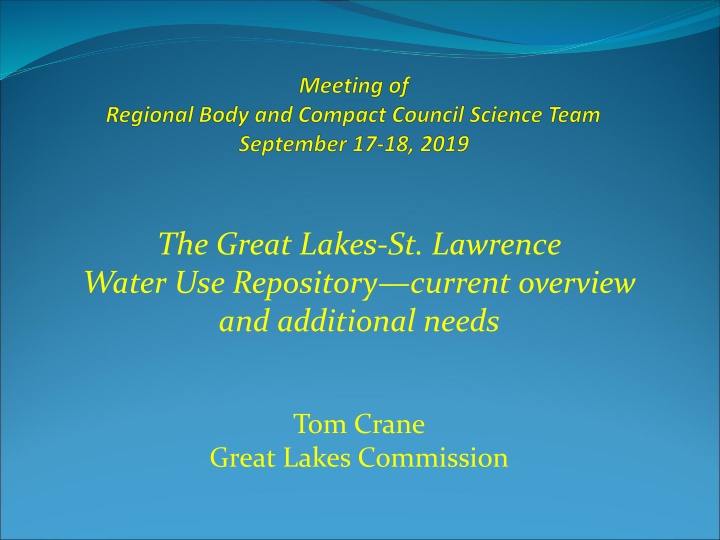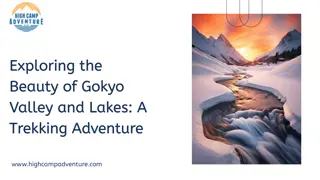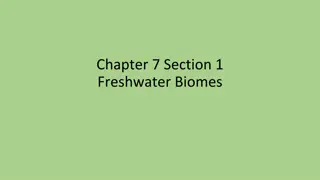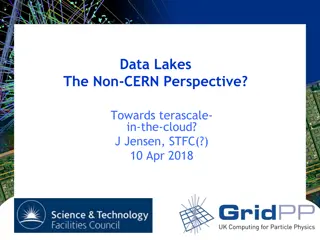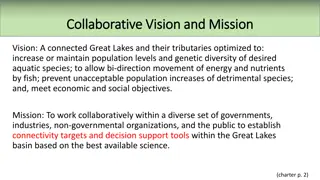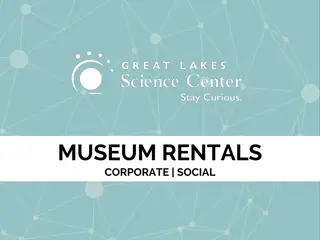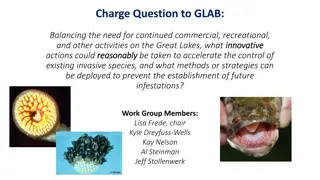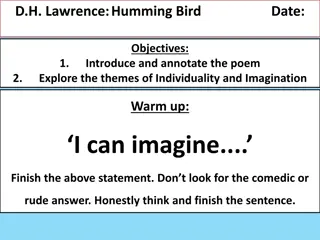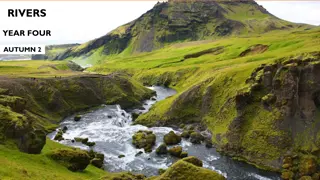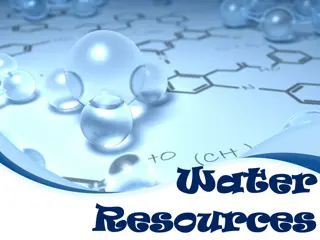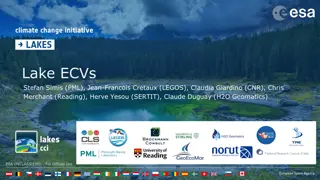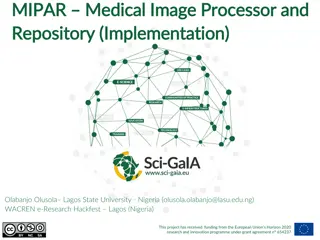The Great Lakes-St. Lawrence Water Use Repository Overview
The Great Lakes Commission manages the Great Lakes-St. Lawrence Water Use Repository, a database tracking water use information in the region since 1988. The repository supports states and provinces in implementing water management regulations, including reporting on diversions, withdrawals, and consumptive uses. Regular updates ensure data quality and compliance with protocols.
Download Presentation

Please find below an Image/Link to download the presentation.
The content on the website is provided AS IS for your information and personal use only. It may not be sold, licensed, or shared on other websites without obtaining consent from the author.If you encounter any issues during the download, it is possible that the publisher has removed the file from their server.
You are allowed to download the files provided on this website for personal or commercial use, subject to the condition that they are used lawfully. All files are the property of their respective owners.
The content on the website is provided AS IS for your information and personal use only. It may not be sold, licensed, or shared on other websites without obtaining consent from the author.
E N D
Presentation Transcript
The Great Lakes-St. Lawrence Water Use Repository current overview and additional needs Tom Crane Great Lakes Commission
History of the Great Lakes-St. Lawrence Regional Water Use Database Managed by the Great Lakes Commission (since 1988). GLC serves as the data base repository under a MOU with the Great Lakes-St. Lawrence Governors and Premiers Supports the states and provinces in implementing: Article 4 (Water Management and Regulation) of GL-SL River Basin Water Resources Compact Article 301 (Information) of the GL-SL River Basin Sustainable Water Resources Agreement. Reports for years 1987-1993 and 1998-2014 2009 Water Use Data Protocols define the responsibilities of the States and Provinces to provide data Protocols fully implemented beginning with the 2012 Annual Report
Article 301 and Section 4.1 Develop and maintain a water resources inventory of compatible water use information Report on all diversions and withdrawals and consumptive uses in excess of 100,000 gallons per day (379,000 litres per day) Report aggregated information annually to the parties and available to the public Help the parties to improve the sources and applications of scientific information regarding the waters of the basin and impacts of withdrawals and diversions from various locations and sources
Database Contents Measures Use Sectors Watersheds Jurisdictions Withdrawals Consumptive use Diversions in/out of the basin Intra-basin diversions Public water supply Commercial and institutional Irrigation Livestock Industrial Power production (once-through cooling) Power production (recirculated cooling) Off-stream hydroelectric power In-stream hydroelectric (optional) Other Lake Superior Lake Michigan Lake Huron Lake Erie Lake Ontario St. Lawrence River Illinois Indiana Michigan Minnesota New York Ohio Ontario Pennsylvania Quebec Wisconsin
Annual Database Update Schedule/Process August May - August September Data QA meetings with jurisdictions Jurisdictions collect data submitted to GLC Report drafting & review Final report & database release Data updates September October - November December
Whats Gone Well? Since 2012, data quality has improved. Improved compliance in water use data collection and reporting Improved documentation of data sources Higher commitment/investment by states and provinces in their water use data collection and reporting programs
Ongoing Needs/Areas for Improvement Improve consumptive use reporting; encourage more direct measurement, more refined estimation protocols and greater consistency in use of coefficients across categories More detailed diversion reporting Invest time and resources to research and better explain unexpected/unusual changes in data from one year to the next Continued commitment to improve data collection and reporting; especially for specific categories (i.e., self-supply irrigation and self-supply livestock)
Issues To Be Addressed: Opportunities to Support the Science Strategy Consider ways that the database can better support the 5-year Cumulative Impact Assessments Encourage and support sector based research especially related to consumptive use Thermoelectric power production (cooling) Agriculture and livestock production Public water supply Reexamine the benefits of reporting data on a sub-watershed scale
Questions? Thomas R. Crane Deputy Director Great Lakes Commission 1300 Victors Way, Suite 1350 Ann Arbor, MI 48108 734-971-9135, ext. 6062 tcrane@glc.org
